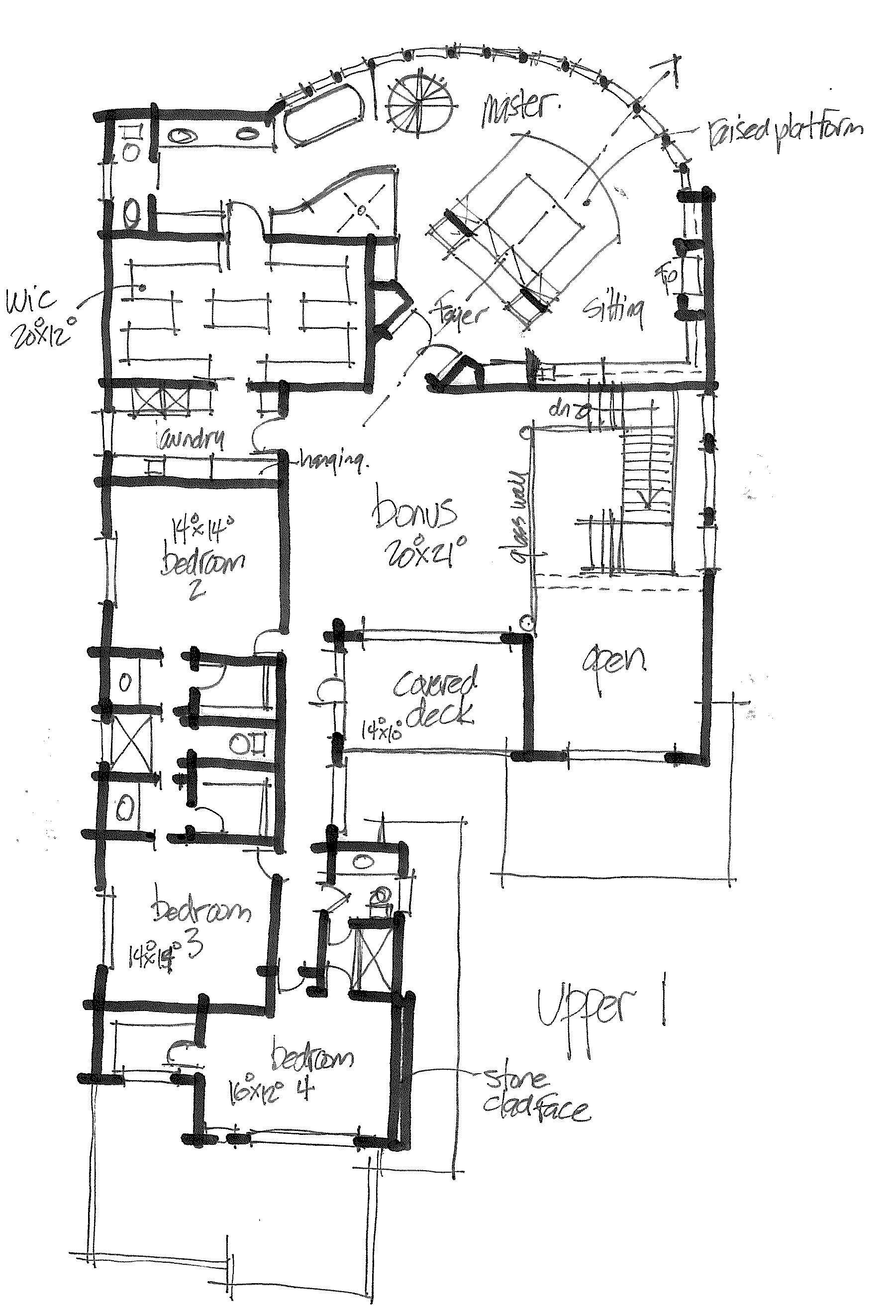Along the same mindset as the other article, I too have found that the education system, for the most part. has stopped teaching hand drawing, so students don’t regard it as an integral part of the design process. Surprising, with the unrelenting evolution of technology, hand drawing can be done with the assistance of technology; it is not necessarily a pen and a piece of paper process. An example of this can be found in an E-writer that allows for the electronic documentation in a free-form.
There is a tremendous push to use the newest most innovative methods in computer design and presentation to our fullest advantage in this profession. However, introduced too early in the process, we find that clients start to feel that this more concrete exacting presentation system begins to almost dictate a belief in one right answer or that we are beginning a more linear path towards their end design. There is a feeling of too many hard edges and limitation to exploring other ideas. Part of this is due to the computer programs requiring information to essentially be absolutely correct or else they are wrong in the end. They require very exacting input to be used straight through the process.
On the other hand, hand drawing allows more flexibility of abstract and alternative concepts to be explored with less time and perfection to be built in. This saves both designer and client time and money. All client meetings involve wish lists, ideas, and overall concepts, and then clarifying these thoughts right in front of their eyes in the present. It is not possible to do this easily or timely with computer programs, since it involves a non-creative process to input key strokes and a series of commands.

Hand drawn concepts engage clients in the moment. Since most of our work pertains to housing, discussing one’s future home is very personal. As Alexander Fernandez states in his article ” the passion, mood and feeling communicated by the image complements the emotion of my voice. This builds a stronger connection between the design and the audience.”
I met with clients just last week whereby they had a very clear idea of what they thought they wanted, and I was able to present a parallel idea for them to consider. That is part of why you hire a professional consultant to work with you on a project, as we can provide alternative thoughts and ideas that may achieve the same end goal in a different way. Or perhaps even end up with a concept that you never would have considered otherwise. There are many individuals that just provide you with an accurate drawing of what you want without providing creative process to flesh out other ideas. This is not how we do business.
Architecture is a form of art, and art brings out emotion, The process of design creates an emotional response from clients the more that they are involved. And in the early stages, technical presentation lessens this connection. Later in the process, once we have fleshed out a number of ideas as we have honed our ideas down to a focused concept, it is here whereby the computer becomes our biggest ally to continue to evolve and present our ideas to the client.
Firstly, we start with a highly personal touch, and then we evolve through the process to incorporate technology to our best advantage to convey vision to our ideas at the right time and place. We look forward to the opportunity to work with each of our clients the same way.
As Alexander Fernandez states “A design process that starts with the hand, akin to the first brush strokes on a canvas, humanizes the process and establishes a strong foundation”. Likening my client custom homes to original works draws on inner creativity to flourish. And in the end, their homes are unique and personalized in regard of their needs and dreams.
